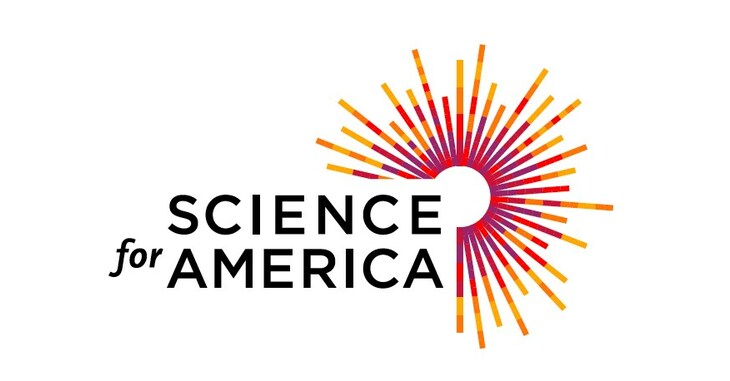Building on recent scientific advances, methods may speed progress, decrease cost, and simplify engineering
CAMBRIDGE, Mass., May 12, 2023 /PRNewswire/ — Science for America (SfA), a non-profit “solutions incubator,” announced today the release of a white paper: “New Opportunities for Fusion Power.” Building on recent scientific advances, the SfA white paper describes two different promising approaches for fusion power that have the potential to speed progress, decrease cost, and simplify engineering challenges and might both be tested efficiently on a single, shared “demonstration system.” The white paper, developed by scientists and technologists under SfA’s Climate & Energy pillar, shares the ideas freely with the aim of spurring public discussion, scientific research, and commercialization efforts to accelerate fusion as a clean, affordable, scalable power source.
Fusion is the process that powers the sun, in which light atoms (like hydrogen) are merged together to form heavier atoms (like helium), releasing massive amounts of energy with no carbon emissions. Because fusion reactions release millions of times higher energy per unit mass than chemical reactions (such as fossil fuel combustion), fusion fuels are effectively limitless and free, with potentially billions of years of easily-accessible energy reserves.
Fusion has been recognized for decades as an ideal complement to other clean energy sources, such as solar and wind power, because it could be available on-demand, readily ramped up and down, and located anywhere. The challenge has been overcoming major scientific and engineering challenges to make practical, inexpensive fusion energy systems.
In the past few years, though, there has been significant progress – including remarkable growth in commercial activity, with dozens of startups worldwide, and major scientific advances. In one breakthrough in 2021, Commonwealth Fusion Systems showed that high-temperature superconducting tape can create the strong magnetic fields needed for compact steady-state magnetic confinement fusion. In a second breakthrough in 2022, the National Ignition Facility showed that inertial confinement of fusion fuels driven by powerful lasers can achieve ignition. (Ignition is the point at which a reaction can burn additional unheated fuel, with the result that fairly small increases in energy input can lead to huge increases in energy output.) However, many challenges still remain to be solved to achieve practical, affordable commercial fusion.
“Science for America brought together strategic advisors and internal experts to explore whether there are promising potential solutions that are currently receiving little attention — particularly ones that might have advantages from an engineering perspective” said Zara L’Heureux Burke, lead scientist of SfA’s Climate and Energy pillar. “After studying a wide range of ways in which fusion might be achieved, the group shined a spotlight on two very interesting approaches.”
The white paper calls the methods a “Magnetic Igniter” and a “Sweet-Spot Burner,” as a shorthand for their notable features. (More formally, they are short-pulse magnetically-driven inertial confinement and intermediate-pulse magnetic confinement.)
Like the National Ignition Facility, the “Magnetic Igniter” aims to achieve ignition — but rather than using lasers, it drives a ultra-fast pulse of electric current through a small fuel container to create a large pulsed magnetic field that compresses and confines the fuel. Relative to laser-driven methods, the magnetic approach has the potential for higher efficiency, smaller scale, lower cost, and simpler/cheaper targets.
The “Sweet-Spot Burner” uses a pulse length in the “sweet-spot” (about one millionth of a second) that balances the minimum required energy and the minimum required power for a viable fusion energy system. The approach has the potential for compact, inexpensive fusion energy systems that could be mass produced to speed deployment around the world.
These two approaches have another potential advantage. Because both use pulsed magnetic confinement (on different timescales), they might be tested on a single shared “demonstration system.” — which would speed testing and reduce costs.
“Science for America’s goal is to bring together scientists and technologists to look for potential game-changing solutions to urgent challenges that aren’t currently happening and then to develop clear vision, strategy and execution plans to make them happen,” said SfA’s chief scientist, Eric S. Lander.
Other projects underway at SfA are focused on ways to capture and use carbon dioxide from the atmosphere, create ways to speed the development of cancer drugs, increase preparedness for future pandemics, and improve STEM education and equity.
The white paper, “New Opportunities for Fusion Power,” has been posted to https://www.scienceforamerica.org/ to share with the scientific community. SfA is inviting input from experts in the field and plans to publish a final version of the paper later in 2023. The SfA white papers are intended to share ideas with the broader scientific community, stimulate discussion and feedback, as well as to encourage research and commercial development of these potential solutions.
ABOUT — Science for America (SfA) is a non-profit “solutions incubator” that brings together scientists and technologists and works with partners across sectors to identify potential game-changing solutions to urgent challenges: climate and energy crisis; health; STEM equity and education; leadership and responsibility with critical technologies; and new innovative models. SfA’s mission is to develop clear vision, strategy, and execution plans, and to ensure the launch and success of those solutions. Possible solutions may include the creation of projects, initiatives, shared facilities, coalitions, new companies, prizes, and advocacy efforts.
Contact:
Kelly Friendly
[email protected]
SOURCE Science for America


